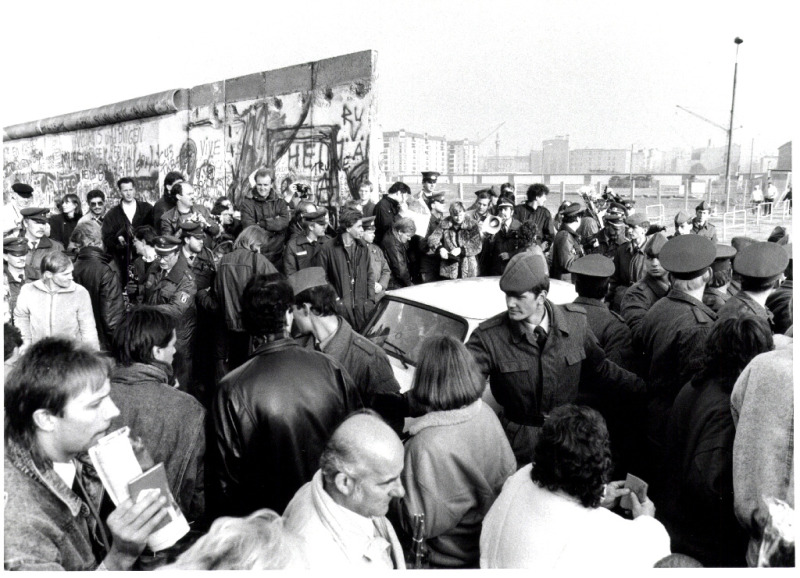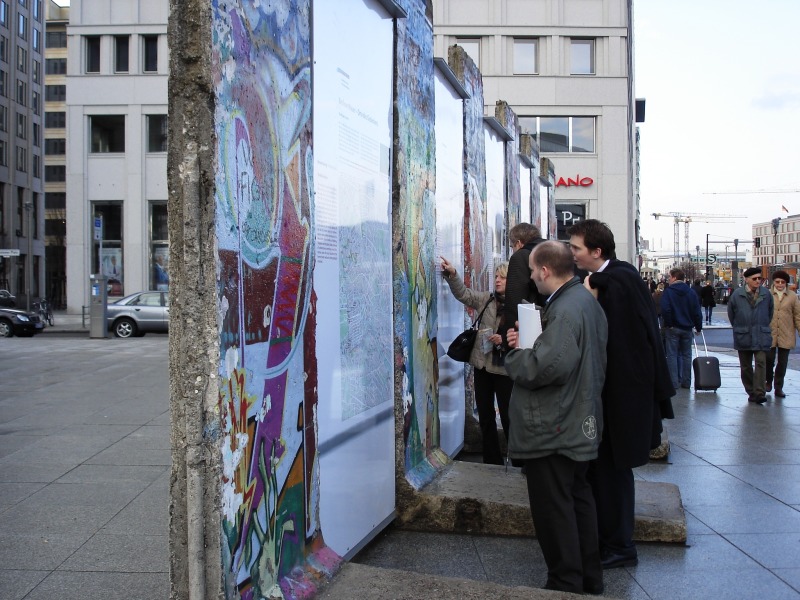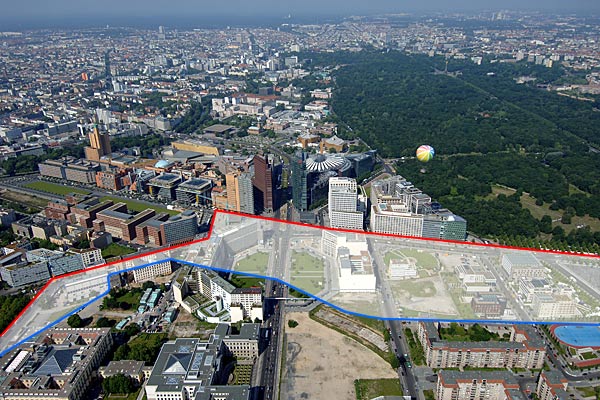Around 1930, Potsdamer Platz was known as Europe’s busiest intersection and was surrounded by hotels, restaurants, and stores. After Berlin was occupied by the Second World War’s victorious powers, the British, American, and Soviet sectors came together at the ruins of Potsdamer Platz.
When the Soviet sector was sealed off on 13 August 1961, barricades were set up between Potsdamer Platz and Leipziger Platz. The Wall eventually transformed the area into a gigantic wasteland in the heart of the city: a “no man’s land” running between the inner and outer walls on East Berlin territory, and an empty expanse on the West Berlin side.
The only vestiges in West Berlin of the square’s original buildings were Weinhaus Huth and a few salons, the kitchen, and the cellar of the Hotel Esplanade. Tourists visiting Berlin in the 1970s and 1980s came to the area anyway, however, lured by its historical reputation, its souvenir stands, and a platform offering a look at the other side of the Wall. The S-Bahn and U-Bahn stations were closed; the U-Bahn line was interrupted at the border, while the south-north route of the S-Bahn trains in West Berlin ran under the center of East Berlin. Their only stop here was the Friedrichstrasse station. Passengers on the train could make out the dim outlines of GDR border guards patrolling the darkened platforms of abandoned S-Bahn stations under East Berlin. The development that can be seen today on Potsdamer Platz and Leipziger Platz came about only after German reunification in 1990.
 German Sign language
German Sign language



